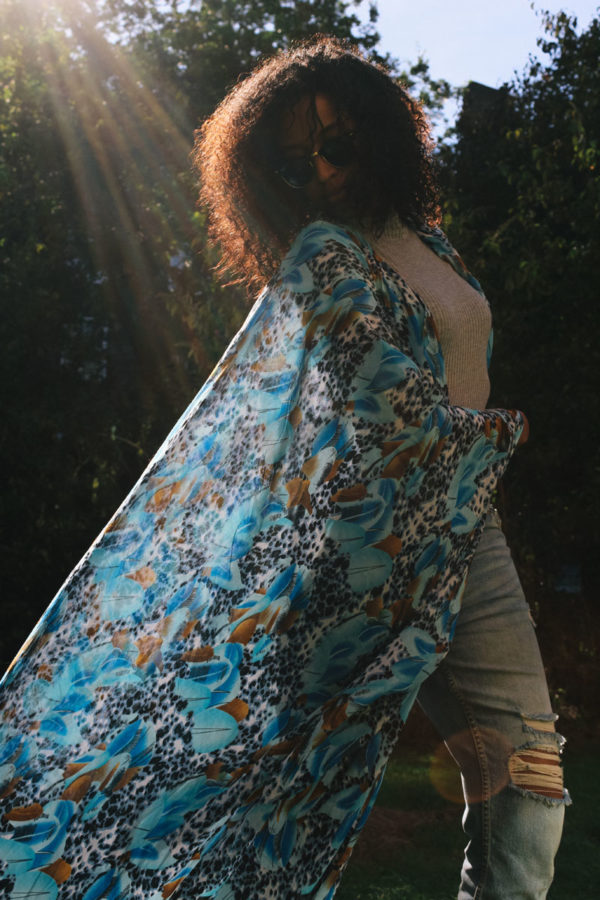
In January, the Somali-British writer Hoda Hashi wrote an essay for OkayAfrica in which she details how traditional Somali clothing, in this case the dirac, helps her feel and explore her culture and belongingness. Like most second-generation Somalis living outside the country, Hashi has grappled with identity, her understanding shaped by her race and religion. In a photo-essay for TRUE Africa, she writes that hers started “with an interest in developing outfits that reflect London’s diverse cultural influences, mine being that of a Somali Londoner. This led me to experiment with contemporary ways to wear the traditional Somali dirac dress.” To interrogate this mesh of social and political pulls, she founded Ina’Xaashi, a six part project on multicultural expression which uses fashion, writing, interviews, and photography to look into cultural belonging for the Somali diaspora.
Like fellow Somali Safy-Hallan Farah’s 1991Zine, which aims to re-present contemporary Somali literary and visual culture, Ina’Xaashi—which means “daughter of Hashi”—is part of a wave of acclaimed Somali creatives who are telling and re-telling the country’s stories, including the novelists Nuruddin Farah and Nadifa Mohamed, the writer-visual artist Diriye Osman, and the poets Warsan Shire and Momtaza Mehri. Ina’Xaashi’s intersectional framing—for fellow second generation, black, African Muslims—makes it relatable to a wider, non-Somali audience.
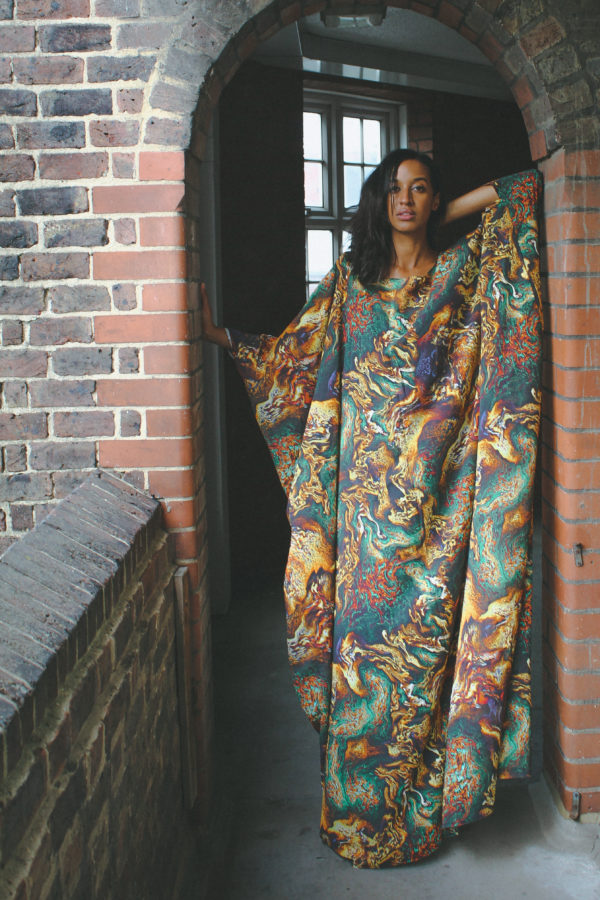
With Ina’Xaashi, Hashi seeks to develop a space for creative expression of cultural influences and uncensored conversations on taboos affecting second generation Somalis raised in the West. The project is particular about feelings of identity displacement and raising minority women’s voices in the #MeToo movement.
The project’s Issue One, featuring intelligent, insightful fashion-forward content, offers stimulating storytelling and personal memories as a conduit to the engagement of wider contemporary issues. Among its contents are original dirac designs modelled by Somali women; and two essays, “The Toxic Rise of Identity by Popularity” and “Stop Asking Me Where I’m ‘Really’ From,” which pry open the problems of national identity for non-White Westerners.
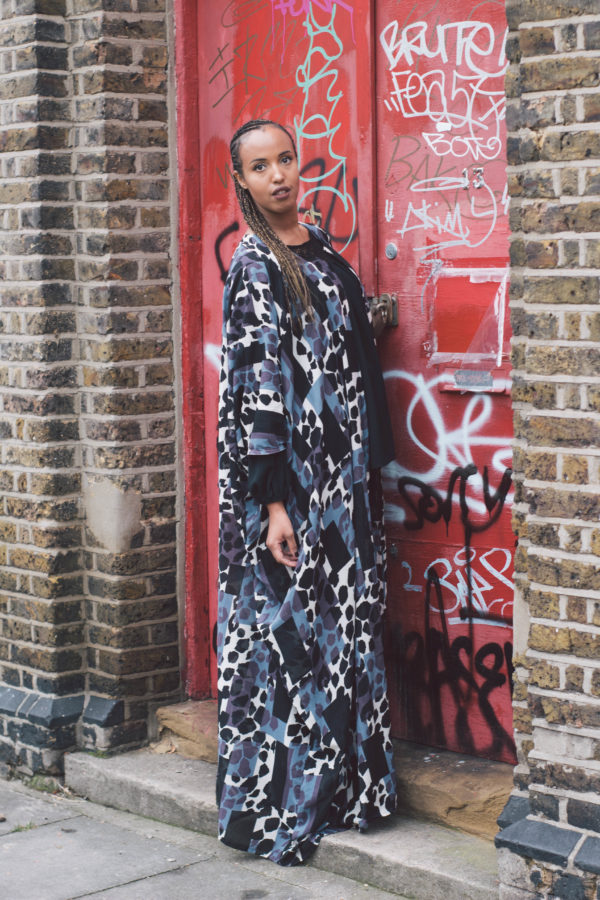
In its debut interview series, Ina’Xaashi featured the Somali writer Hanna Ali, a conversation on her collection of short stories The Story of Us (MarketFiftyFour, 2018).
Here is an excerpt:
Ina’Xaashi
The Story of Us opens with this line delivered from mother to daughter: “As long as you’re in this house you’re still in Soomaliya”. I’m interested in the framing of your character’s world as a juxtaposition between the family home as an extension of Somali territory and everything on the other side of her front door as “England”. Tell me a little more about this concept of a country within a country?
Hanna Ali
The Story of Us is the one closest to my own experience growing up. I grew up in a household where the concept of Somalia was conjured up, it was meant to put fear in me, to say: you are different, no matter how much you integrate or speak the language fluently
whether that’s Swedish or English, you are always going to be Somali. And that’s something that can comfort you, because it’s your constant, especially when you’re a refugee travelling from country to country. But it’s also something that makes you feel like
you’re always gona be different.
I was always aware that my house smelled different from my friends’ homes, the food and entire vibe was different, and inside the home we had the tacky furniture which was so un-Swedish and un-British, reminding you that actually within these four walls, you are somewhere else, and that’s something I wanted to capture in the book.
Ina’Xaashi
Would you say there is a hard border between these places for your characters or are the boundaries fluid? With three generations of Somali women living in the household, is the answer to this different depending on which character’s perspective we consider?
Hanna Ali
The three characters represent different levels of how successful you are with integrating. The grandmother is somebody who, despite having lived in Sweden and the UK, never integrated in society and never learned how to speak either of those languages. She is very
much in this Somali region that the household represents in the sense that she doesn’t know how to communicate with people outside of the home.
The mother represents an attempt. She’ll go and try her best, learn Swedish and then English in a broken way. She’ll do just enough to get through the day and then come back home and think this is my comfort zone, this is where I wear the baati (informal dirac), this
is my music, my food, my safety.
And then the daughter represents that new generation that, if they want to, can really leave the culture and never come back. That fear her grandmother has of her leaving for university is also the fear that she can actually leave this culture fully, shed herself from it
and not look back, if she wants to. She has the ability to integrate in a way that the mother and the grandmother could not.
Ina’Xaashi
If the mother in “The Story of Us” has declared her household to be Somalia, her style of rule is framed as an authoritarian one – a “fearful, corrupt government in a shiny multicoloured diraac”. Tell me what you meant by “corrupt” in this context?
Hanna Ali
Corrupt in that context is a bit multi-layered. It’s playing on the idea that the Somali government has faced a lot of corruption as a result of the civil war and that anybody who is in charge is corrupt, anybody you look up to who is meant to teach and guide you is
ultimately corrupt.
Read the full interview on inaxaashi.com.
Congratulations to Hoda Hashi.



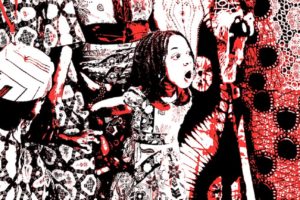
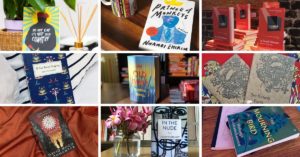



COMMENTS -
Reader Interactions